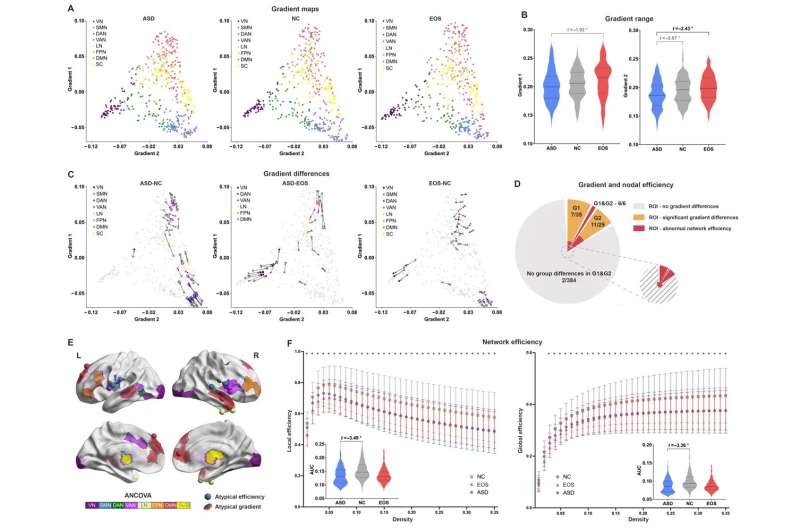This article has been reviewed according to Science X's editorial process and policies. Editors have highlighted the following attributes while ensuring the content's credibility:
fact-checked
trusted source
proofread
Neuroanatomic and connectomic profiles of early-onset schizophrenia and autism spectrum disorder

Schizophrenia (SCZ) and autism spectrum disorder (ASD) are two mental disorders with abnormal neurodevelopment that carry a high burden for families and society. The two disorders exhibit similar clinical symptoms in social interaction, emotional reciprocity, and cognitive deficits.
Therefore, using non-invasive and radiation-free functional MRI (fMRI) to examine the brain structure and functional abnormalities in children with early-onset schizophrenia (EOS) and ASD is of great significance for exploring the brain mechanisms of the diseases and the early diagnosis based on objective biomarkers.
A recent study published in the journal Medicine Plus and based on standardized functional magnetic resonance imaging (fMRI) data from 594 children at five sites, including children with EOS, children with ASD, and normal control, has depicted the neuroanatomic and functional connectomic profiles of EOS and ASD based on brain imaging.
The work has revealed similar yet distinct structural/functional brain abnormalities between the two disorders. From the perspective of similarities, both EOS and ASD exhibit significant reductions in cortical thickness and functional connectivity in the parietal and temporal lobes.
However, in terms of differences, EOS shows a greater reduction in cortical thickness than ASD and uniquely exhibits declines in several subcortical structures, such as the left thalamus, bilateral hippocampus, and amygdala. Conversely, ASD exhibits connectomic abnormalities that differ from EOS, which is manifested in a metric that characterizes the functional differentiation and hierarchical organization of different brain regions, known as the functional gradient.
ASD shows an overall decline in gradient range and a widespread trend of gradient compression across network nodes. This compression trend is spatially associated with a decline in brain network efficiency. Additionally, only ASD (not EOS) exhibits a decrease in functional connectivity at the level of large-scale networks.
In general, EOS exhibits more severe anatomical abnormalities, whereas ASD shows a more subtle trend in abnormalities concerning certain connectomic properties. The classification models utilizing neuroanatomic and connectomic profiles as features attained accuracy rates exceeding 80% and demonstrated adequate performance in rigorous cross-site validation, offering the potential for MRI to facilitate early diagnosis and intervention in mental disorders with abnormal neurodevelopment.
The researchers were led by Prof. Chao-Gan Yan from the Institute of Psychology, Chinese Academy of Sciences, Prof. Jing Liu from the Peking University Sixth Hospital, Prof. Xue-Rong Liu from the Second Xiangya Hospital of Central South University, and Prof. Ya-Song Du from the Shanghai Mental Health Center.
More information: Bin Lu et al, Same same but different: Neuroanatomic and connectomic profiles of early-onset schizophrenia and autism spectrum disorder, Medicine Plus (2024). DOI: 10.1016/j.medp.2024.100007



















